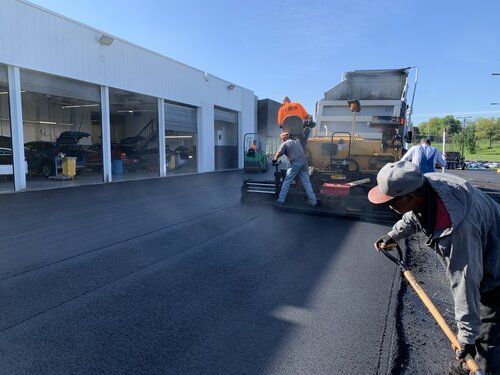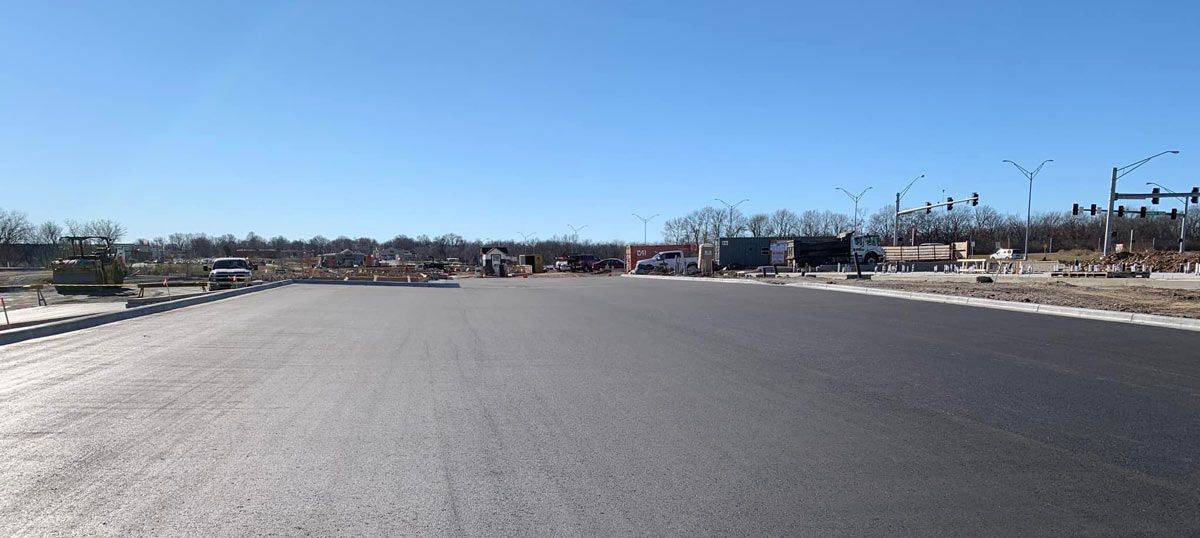Introduction
Designing an effective layout for parking lot striping is crucial for optimizing traffic flow, enhancing safety, and maximizing the use of available space. A well-stripped parking lot not only provides clear direction for vehicles but also adheres to regulations such as ADA compliance, ensuring accessibility for all. In this comprehensive guide, we will delve into various aspects of parking lot striping, including planning, execution, materials used, and the ongoing maintenance required to keep your asphalt in top condition. Whether you are a business owner looking to improve your parking facilities or a property manager overseeing multiple sites, understanding the intricacies of parking lot striping will equip you with the knowledge needed to make informed decisions.
Understanding Parking Lot Striping
What is Parking Lot Striping?
Parking lot striping refers to the process of applying paint or other marking materials on the pavement surface to delineate parking spaces, directional arrows, symbols, and other important information. This ensures that drivers can navigate efficiently while adhering to established guidelines.

Why is Effective Parking Lot Striping Important?
Effective striping plays a pivotal role in creating order within a parking area. Properly marked lines help reduce confusion among drivers, minimize accidents, and provide a clear framework for managing vehicle movement. Additionally, well-marked lots enhance the aesthetic appeal of commercial properties.

Designing a Layout for Effective Parking Lot Striping
Assess Your Space
Before diving into design considerations, it’s essential to assess your available space. Measure the total area of your parking lot and take note of any obstacles such as light poles or landscaping features that may impact the layout.
Consider Traffic Flow
Evaluate how vehicles currently move through your property. Is there a natural flow that can be enhanced with strategic striping? Consider creating one-way lanes or angled parking spots if they help streamline traffic.
Determine Parking Needs
Identify the type and number of vehicles that typically utilize your parking facility. Are there more compact cars or larger trucks? Knowing this information will influence whether you opt for standard-sized spaces or if you need designated areas for oversized vehicles.
ADA Compliance
Ensuring compliance with the Americans with Disabilities Act (ADA) is non-negotiable when designing a layout. Incorporate accessible spaces that meet specific size requirements and are conveniently located near building entrances.
Choose Striping Patterns Wisely
The patterns you choose can significantly impact how effectively your parking lot functions:
- Straight Lines: Ideal for maximizing capacity in large lots. Angled Spaces: Can enhance maneuverability but may require more space. Parallel Lines: Often used in smaller lots where space is limited.
Materials Used in Parking Lot Striping
Types of Paints and Coatings
Various types of paints are available for parking lot striping:
Water-Based Paint: Environmentally friendly but may not last as long. Oil-Based Paint: Offers durability but has higher VOC emissions. Thermoplastic Markings: Provide longevity and visibility; often used in high-traffic areas.
Choosing Quality Materials
When selecting materials for parking lot striping, consider factors such as climate conditions and expected traffic loads. High-quality materials might have a higher upfront cost but can save money in maintenance over time.
Executing the Striping Process
Preparation Phase
Proper preparation is key to successful parking lot striping:
Cleaning: Remove any debris or previous markings using pressure washing. Repairs: Address any cracks or potholes before painting by utilizing asphalt repair solutions like crack sealing or patching. Layout Markings: Use chalk lines or tape to outline where stripes will go before applying paint.Application Techniques
Depending on your choice of material:
- For spray paint applications: Ensure even coverage and use appropriate equipment. For thermoplastic markings: Follow manufacturer instructions regarding heating and application methods.
Maintenance Post-Striping
Regular Inspections
Conduct regular inspections to assess wear and tear on markings:
- Check for fading due to sun exposure. Look for damages from weather conditions like snow plowing or heavy rain.
Restoring Visibility Through Restriping
While maintaining visibility may require restriping every 12–24 months depending on traffic volume and environmental factors, it’s essential to keep markings fresh to ensure safety.
Cost Factors in Parking Lot Striping
Understanding Asphalt Paving Costs
When budgeting for parking lot striping services, consider factors such as:
- The size of your lot (cost per square foot). Complexity of design (custom markings add costs). Type of paint used (quality affects pricing).
Comparative Analysis: Restipring vs New Striping
Weigh the costs between restriping existing lots versus fully resurfacing them with new asphalt paving services when necessary—understanding when repair versus replacement makes sense financially is critical.
FAQ Section
1. What is ADA-compliant parking lot striping?
ADA-compliant striping refers to markings that meet specific standards set by the Americans with Disabilities Act regarding size and placement of accessible spaces.
2. How often should I restripe my parking lot?
Typically, restriping should occur every 12–24 months depending on wear from traffic and environmental conditions.
3. What are common mistakes made during parking lot striping?
Common mistakes include poor measurement leading asphalt paving to misaligned lines or inadequate attention paid to ADA requirements which could lead to legal issues down the line.
4. What’s included in professional asphalt paving services?
Professional asphalt paving services usually cover installation, repairs like crack sealing or patchwork maintenance along with sealcoating options afterward.
5. How do weather conditions affect striping longevity?
Extreme weather conditions such as heavy rains or snow can accelerate wear on paint; hence choosing durable materials becomes essential based on local climates.

6. Can I DIY my own parking lot striping?
While DIY options exist especially for smaller lots; hiring professionals typically guarantees quality adherence ensuring designs comply with local regulations effectively mitigating potential liabilities from improper installations.
Conclusion
In conclusion, designing a layout for effective parking lot striping requires careful planning and consideration of numerous factors including traffic flow patterns, ADA compliance needs, material choices—each playing an integral role in achieving an efficient system tailored specifically toward user experience while maximizing property utility value over time through regular maintenance practices post-installation efforts ensuring longevity without compromising aesthetics involved throughout this process! By investing time into understanding these elements deeply you'll cultivate safer environments enhancing overall satisfaction amongst users navigating through them daily!